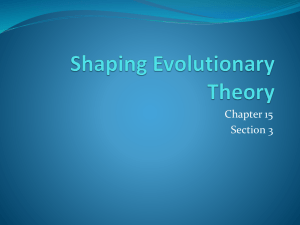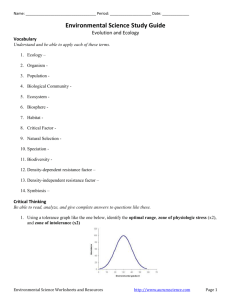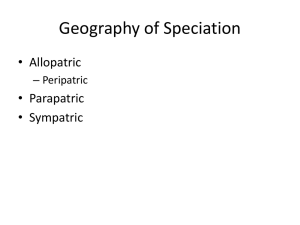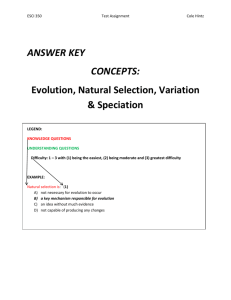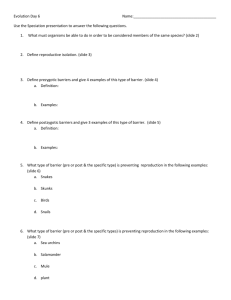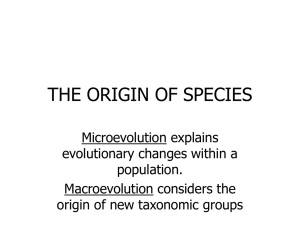Learning Guide: Speciation
advertisement
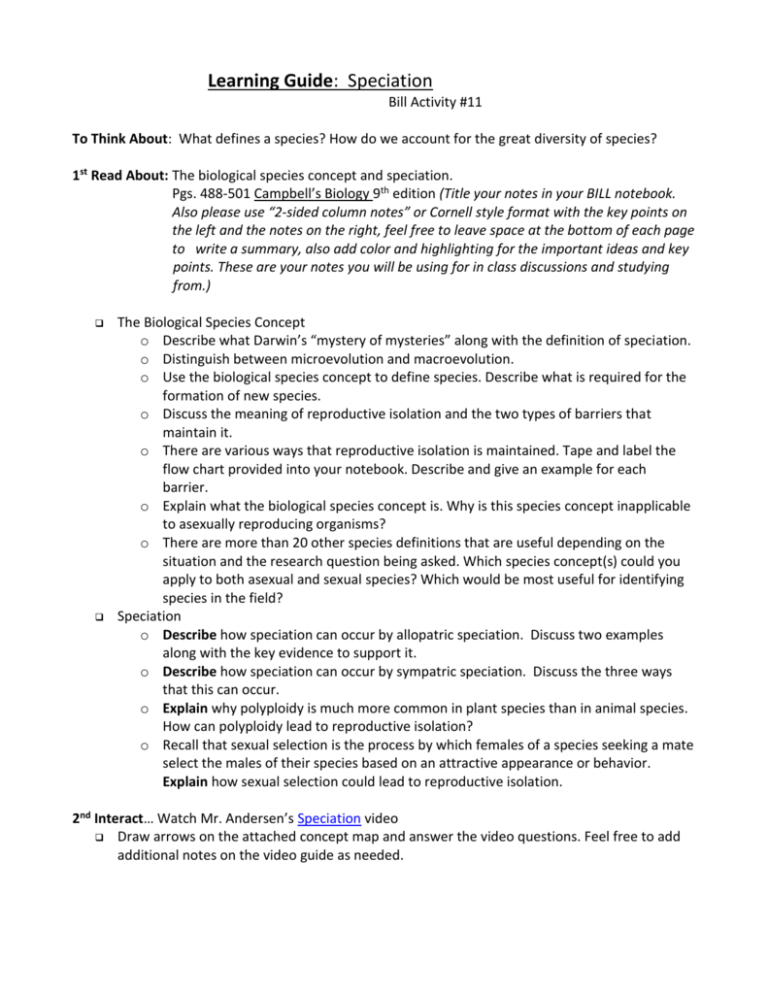
Learning Guide: Speciation Bill Activity #11 To Think About: What defines a species? How do we account for the great diversity of species? 1st Read About: The biological species concept and speciation. Pgs. 488-501 Campbell’s Biology 9th edition (Title your notes in your BILL notebook. Also please use “2-sided column notes” or Cornell style format with the key points on the left and the notes on the right, feel free to leave space at the bottom of each page to write a summary, also add color and highlighting for the important ideas and key points. These are your notes you will be using for in class discussions and studying from.) The Biological Species Concept o Describe what Darwin’s “mystery of mysteries” along with the definition of speciation. o Distinguish between microevolution and macroevolution. o Use the biological species concept to define species. Describe what is required for the formation of new species. o Discuss the meaning of reproductive isolation and the two types of barriers that maintain it. o There are various ways that reproductive isolation is maintained. Tape and label the flow chart provided into your notebook. Describe and give an example for each barrier. o Explain what the biological species concept is. Why is this species concept inapplicable to asexually reproducing organisms? o There are more than 20 other species definitions that are useful depending on the situation and the research question being asked. Which species concept(s) could you apply to both asexual and sexual species? Which would be most useful for identifying species in the field? Speciation o Describe how speciation can occur by allopatric speciation. Discuss two examples along with the key evidence to support it. o Describe how speciation can occur by sympatric speciation. Discuss the three ways that this can occur. o Explain why polyploidy is much more common in plant species than in animal species. How can polyploidy lead to reproductive isolation? o Recall that sexual selection is the process by which females of a species seeking a mate select the males of their species based on an attractive appearance or behavior. Explain how sexual selection could lead to reproductive isolation. 2nd Interact… Watch Mr. Andersen’s Speciation video Draw arrows on the attached concept map and answer the video questions. Feel free to add additional notes on the video guide as needed. Supplementary Resources: Click the links below for more information to help you learn more about this lesson. Crash Course: “Speciation” Kimball’s Biology Pages: Speciation UC Berkeley’s Understanding Evolution: Speciation UC Berkeley’s Understanding Evolution: Evo-Devo Nature article: “Darwin’s Finches Tracked to Reveal Evolution in Action.” University of Utah Learn.Genetics: Stickleback Evolution University of Utah Learn.Genetics: Foundational Toolkit Genes (Building an Eye) DNA From the Beginning: Master Genes Control Basic Body Plans University of Miami: Reproductive Isolation Learn More: For more examples of speciation, use the links below: BBC’s GCSE Bitesize Biology:Natural Selection and Speciation TalkOrigins.org: Examples of Speciation Brown University: Case Histories of Speciation UC Berkeley: Evidence for Speciation


